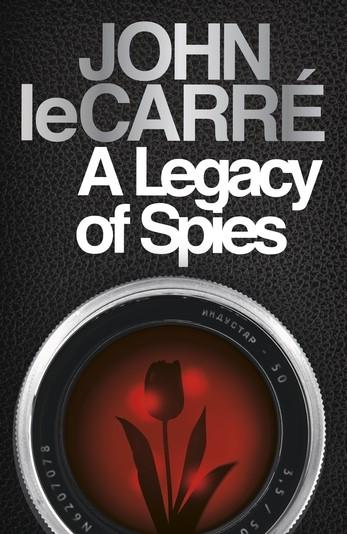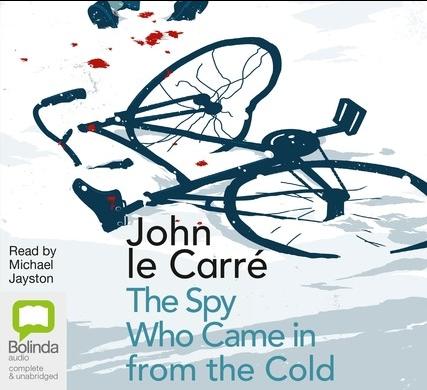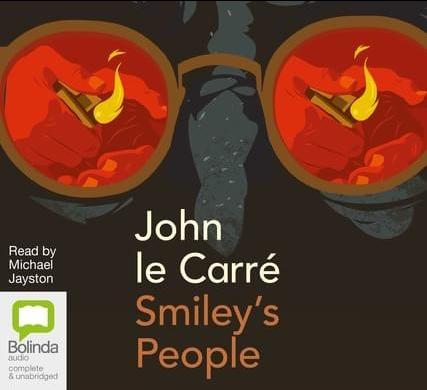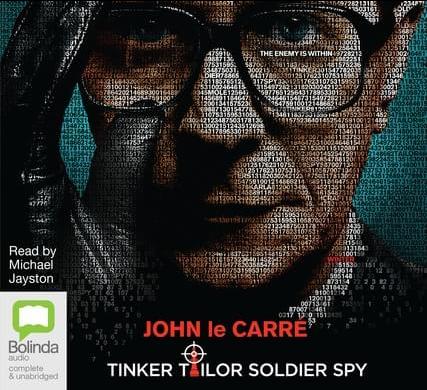The Many Faces of George Smiley
Our one-man encyclopaedia Alan Dunne (Malahide Library) takes a deep-dive into the spy world of John le Carre’s fictionalised character, George Smiley.
Ask a friend to name a famous fictional spy who has been portrayed on-screen by several different actors and it is quite likely they will respond with the name James Bond.
However, others might reply with the name George Smiley. He may not be as universally recognised but to any devotee of tales of espionage and spycraft, whether in literature or on the screen, George Smiley is a pivotal figure. Indeed, to some he is the quintessential spymaster.
Smiley is the creation of bestselling author John le Carre, and first appeared in le Carre's debut novel Call for the Dead, published in 1961. He has since appeared in eight further novels, most recently in A Legacy of Spies (2017), giving the character a literary career that spans six decades. He has also been portrayed, in both film and television adaptations, by many celebrated actors.

Smiley is a career intelligence officer with "The Circus", the British overseas intelligence agency. Like the unnamed anti-hero (Harry Palmer in the film adaptations) of Len Deighton's novels of the nineteen-sixties, Smiley represented a more realistic and human version of a spy, as a tonic to the glamour and charisma of James Bond.
George Smiley is middle-aged, short, overweight, balding and bespectacled. Polite and quietly spoken, Smiley's placid and unobtrusive exterior conceals an inner cunning, a mastery of spycraft and an occasional ruthlessness, though he is not untroubled by a consciousness of the sometimes sordid and unethical aspects of his profession.
Call for the Dead found Smiley investigating the apparent suicide, though possibly murder, of a civil servant suspected of being a communist.
Smiley again featured in Le Carre's second novel A Murder of Quality (1962), the only Smiley tale which is set outside the world of spies and espionage. Here, Smiley is called upon to investigate a murder at a public school.
In le Carre's 1963 novel The Spy Who Came in from the Cold, Smiley played a supporting role. Here, he manipulates agent Alec Leamas into posing as a defector and sends him to Germany to apparently orchestrate the death of a British double agent whose cover, it is feared, is about to be blown. The mission ends in tragedy despite Smiley's efforts.

The novel was a huge success, and succeeded in conveying the tensions and complexities of the Cold War, and the demands, in terms of questions of ethics and loyalty, it placed upon those embroiled in the shadowy battlegrounds of this conflict between East and West.
George Smiley made his screen debut in the 1965 film adaptation of The Spy Who Came in from the Cold which starred Richard Burton as Alec Leamas. Smiley was portrayed by Rupert Davies in what was a minor role.
In the same year, Smiley again played a supporting role in le Carre's novel The Looking Glass War, but he would return to the big screen, after a manner, in the 1966 film The Deadly Affair, an adaptation of le Carre's first novel Call for the Dead.
As it was a Columbia Pictures production, and Paramount owned the film rights to the name George Smiley (acquired when filming The Spy Who Came in from the Cold), Smiley was renamed Charles Dobbs. But in this film, he was the central character and was portrayed by the internationally famous actor James Mason. The Deadly Affair received five BAFTA Award nominations.
The Looking Glass War was adapted as a film in 1970, featuring Anthony Hopkins and Ralph Richardson among the cast, but the character of George Smiley was dropped from the film.
John le Carre returned to the character of Smiley in the 1974 novel Tinker Tailor Soldier Spy. Perhaps the most celebrated of his literary appearances, here George Smiley again takes centre stage. Having being forced out of The Circus after a botched operation resulted in the capture of a British agent in Czechoslovakia, Smiley is secretly tasked with uncovering a Soviet mole at the heart of the organisation. After the successful conclusion of this mission, Smiley is appointed temporary head of The Circus.
Le Carre's next novel, The Honourable Schoolboy (1977) found Smiley looking for opportunities to target his nemesis Karla, the Moscow Centre spymaster, with Hong Kong serving as the arena for their various machinations.
In 1979, the B.B.C. produced a highly successful adaptation of Tinker Tailor Soldier Spy as a seven-part drama, starring Alec Guinness as arguably the most famous on-screen incarnation of George Smiley. Le Carre cited Tinker Tailor Soldier Spy as his favourite film adaptation of his work, attributing this to his experience of collaborating with Guinness.
Le Carre had originally favoured the actor Arthur Lowe (most famous for his portrayal of Captain Mainwaring in the B.B.C. comedy series Dad's Army) for the role of Smiley, but so admired Alec Guinness's performance that he subsequently admitted coming to visualise the character with Guiness's face.
This television adaptation won two BAFTA awards, including a Best Actor Award for Alec Guinness.
In le Carre's 1979 novel Smiley's People, George Smiley finally defeats his opponent of many years, succeeding in blackmailing Karla into defecting to the West.

Meanwhile, after the success of Tinker Tailor Soldier Spy, the B.B.C. considered adapting The Honourable Schoolboy, but a production in South East Asia was considered prohibitively expensive, and therefore it was decided to instead adapt the following novel, Smiley's People.
Screened in 1982, with Guinness reprising the role of George Smiley, Smiley's People was another great success, both with critics and audiences, and won four BAFTA awards, including another Best Actor Award for Alec Guinness.
The character of Smiley maintained a low profile for the remainder of the nineteen-eighties. John le Carre's 1990 novel The Secret Pilgrim found Smiley briefly returning to The Circus to explore possible areas of co-operation between British and Russian intelligence services.
Smiley also made a return to the small screen, played by veteran actor Denholm Elliott in a 1991 adaptation by I.T.V. of le Carre's second novel A Murder of Quality.
Celebrated English actor Gary Oldman played Smiley in the 2011 film adaptation of Tinker Tailor Soldier Spy. The film was both a resounding critical and commercial success, and Oldman was nominated for an Academy Award for Best Actor for his performance. The film won the BAFTA Award for Best British Film. John le Carre praised Oldman's performance, and appeared in a cameo as a guest in a party scene.

Smiley's most recent appearance was in le Carre's 2017 novel A Legacy of Spies, which explores the fallout from the events depicted in The Spy Who Came in from the Cold. Meanwhile, Gary Oldman has spoken of his hopes to again play the character in a future film adaptation of Smiley's People.
Lacking the cool and heroics of James Bond, it is perhaps rather easy to overlook the unobtrusive, unassuming George Smiley. But he has proven to have just as much longevity as his more charismatic fellow spy, and it's just as likely that we haven't seen the last of the old spymaster.
You can browse the selection of John le Carre’s eBooks and eAudiobooks on your Borrowbox App: